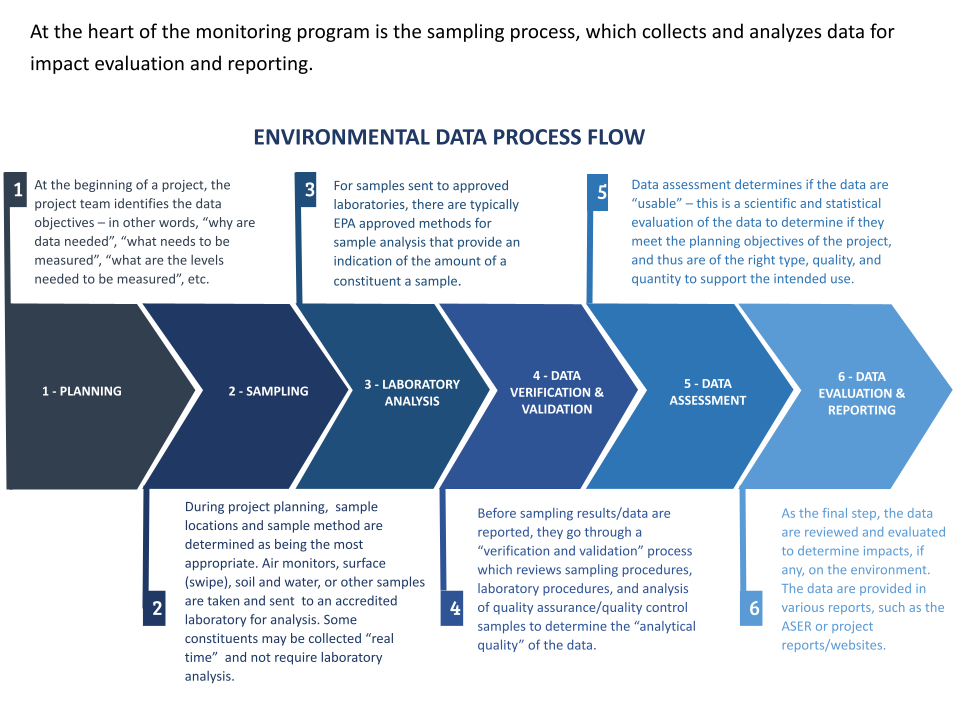WHAT IS ENVIRONMENTAL MONITORING?
Environmental monitoring is a system of monitors that sample at regular times. The samples are then analyzed at a laboratory and assessed to see if site activities have any impact on the public or the environment.
Environmental Monitoring at the Portsmouth site
At DOE’s Portsmouth site, years of environmental studies conducted on and around the site revealed what type of contaminants were associated with uranium enrichment operations. Scientists, health officials, and risk professionals created a plan to monitor for those contaminants to maintain the safety of workers, the public and the environment.
At Portsmouth, DOE has installed an extensive monitoring program that samples for radiological and chemical contaminants in air, water, soil, sediment, and biota (animals, vegetation, crops) on and near the plant site. Each year, DOE collects, reviews and reports on more than 10,000 environmental samples. The Annual Site Environmental Report (ASER) is published each year to report the results of these monitoring efforts. Copies of the ASER are available here.

As DOE prepared for demolition of the site’s process buildings, DOE worked with health and safety experts, the Ohio Department of Health and the Ohio EPA to develop additional environmental monitoring layers to focus on demolition activities.
X-326 Process Building Demolition Air Monitoring
In addition to the existing environmental monitoring network, a system of project specific and co-located air monitors is specifically designed for process building demolition. Co-located means that both DOE and OEPA or ODH take samples at the same location and analyze and report the data independently. The data for all the monitors is reported either weekly (real-time), monthly or quarterly.
Weekly
Real-time data is gathered for dust (particulate matter) and radiation (Alpha/Beta). Real-time data is reported weekly. The real-time monitors include the X-326 Demolition monitors and monitors A50, A51, A52, A53, A54, and A72. The real-time monitors are an early warning system for any possible releases.
Click here to view real-time data.
Monthly
Monthly reported data is gathered for dust (particulate matter), chemicals, metals, and asbestos. Samples are taken at regular times during the month and analyzed for the monthly report. The monitors reported monthly are the DOE/OEPA Co-located monitors.
Quarterly
Quarterly reported data is gathered for radiation (specific radionuclides). Samples are taken at regular times during the quarter and analyzed for the quarterly report. The monitors reported quarterly are the DOE/ODH Co-located monitors.

